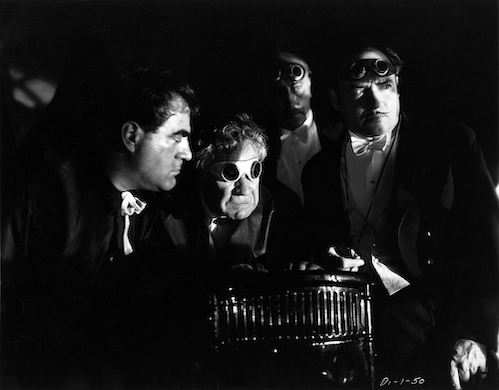From MoMA’s Vault, Films Highlight the Bizarre Landscape That Was Early Hollywood
A 1937 fire destroyed much of Fox Film Corporation’s holdings, but the pictures in this series were restored from nitrate work prints found in a Los Angeles storage facility.

‘A View from the Vaults 2023: A Fox Dozen’
Museum of Modern Art
July 1-11
“A Fox Dozen” is the latest installment of “A View from the Vaults,” the Museum of Modern Art’s ongoing series of movies culled from its Department of Film. This particular program highlights the precursor to 20th Century Fox, the Fox Film Corporation.
William Fox was a scrappy, can-do entrepreneur who parlayed a Brooklyn nickelodeon into a media empire that would go on to include a chain of theaters, distribution companies, and, eventually, a movie studio. Among his signal accomplishments was acquiring the rights to sound technology and establishing the “Fox Movietone News,” a long-running precursor to televised news that established a format that holds true even today.
The artistic side of making pictures wasn’t high on Fox’s list of priorities, but he put the gears into motion when it suited his ambitions.
Theda Bara vamped her way to immortality under Fox’s auspices, and a Western star, Tom Mix, rode into the sunset to considerable profit. Janet Gaynor became the studio’s biggest star, being the first recipient of the Best Actress Oscar on the basis of three simultaneous films: “7th Heaven” and “Sunrise: A Song of Two Humans,” both 1927, and 1928’s “Street Angel.” There’s a hat trick we won’t see again.
Fox’s hegemony came to an end through a variety of circumstances, not least an automobile accident and rapacious competition: when Fox announced a merger with Loews Inc., Metro-Goldwyn-Mayer went to pull strings at the Department of Justice in an attempt to stop the deal. But it was the 1929 stock market crash that upended Fox’s continuing efforts in the film industry. He was ultimately ousted as head of the company, a move that led to Fox Films making a deal with Twentieth Century Pictures in 1935.
During his regime, Fox employed a variety of significant directors, including John Ford, Howard Hawks, F.W. Murnau, and Raoul Walsh. It’s a wonder their efforts still exist: A 1937 fire at the studio’s New Jersey warehouse destroyed much of Fox’s holdings. Through the efforts of MoMA’s archivist, Eileen Bowser, working along with producer Alex Gordon, the films were restored from nitrate work prints found in a Los Angeles storage facility.
All of which constitutes a story whose dramatic turns warrant the current retrospective. Yet the movies chosen by curator Dave Kehr could have just as easily been lumped under a banner highlighting the bizarreries of early Hollywood, of an industry subject to quickly evolving technological changes and constant crises of artistic purpose.

“6 Hours to Live” (1932) is among the oddest of ducks, being an unlikely mishmash of political thriller, romantic melodrama, New Age jiggery-pokery, and “Frankenstein.” The set-up is somewhat prescient: Warner Baxter is Captain Paul Onslow, the ambassador from a small European country who is the only holdout to an international financial treaty. For his efforts, he’s assassinated, but not before we meet Otto Bauer (George F. Marion), who has just invented a device capable of reanimating the dead. The catch is that the life-giving ray has a short shelf life: six hours.
Professor Bauer goes ahead and zaps the dead Onslow and, after some initial bewilderment, the good captain goes after his murderer and, along the way, rights some wrongs. The religious aura Onslow acquires is a mite unseemly. He assures a grieving mother that her dead son is in a happier place, helps a prostitute change her ways, and convinces Baroness Valerie von Sturm (a silky Miriam Jordan) that she’s better off marrying his best friend. Director William Dieterle does what he can to bring a measure of coherence to the project.
“I Am Suzanne!” (1933) is another weird one, a tale of a former tightrope-walker whose career as Paris’s most famous dancer undergoes tragedy and is then restored through the efforts of a group of puppeteers.
Should you not be in the mood for a morality tale told via marionettes, “Call Her Savage” (1932) is a hot mess of politically incorrect tropes starring Clara Bow. Miscegenation, adultery, prostitution, and the “It Girl” proving cosseted by sound are enlivened considerably when Thelma Todd, the gifted comedienne who would die under murky circumstances three years later, appears on screen.
Elsewhere in the series, you’ll find Spencer Tracy, Walter Lang, Erich von Stroheim, Loretta Young, Charles Boyer, and Rowland V. Lee. If those names ring a bell, you’re enough of a cinephile to unearth a treasure or two from “A Fox Dozen.”

